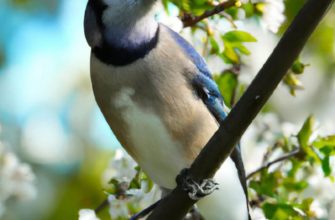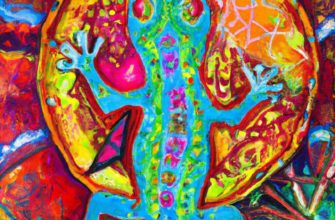To understand bee symbolism and its significance, delve into the definition of bee symbolism and its importance in culture. This exploration will shed light on the deeper meanings associated with bees and how they are used to convey messages and values.
Definition of Bee Symbolism
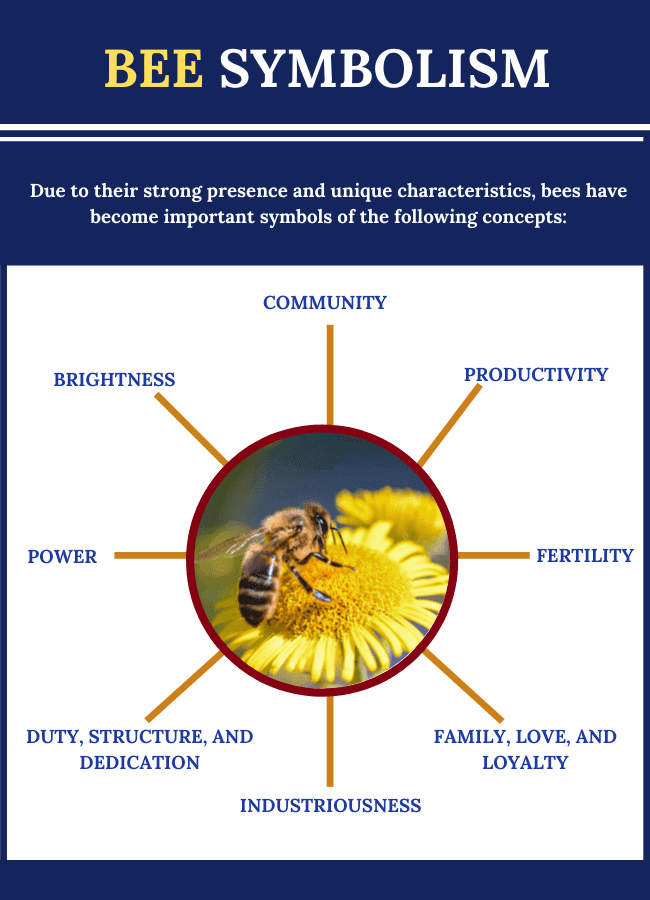
Bee symbolism is linked with hard work, community, and purpose. They stand for productivity and dedication to a cause. They are seen as a reminder to stay focused and work together. In many cultures, bees are sacred and carry messages between worlds. Their dance patterns are a metaphor for collaboration and communication.
A special characteristic of bee symbolism is abundance. Bees collect nectar from flowers, aiding pollination and keeping plants alive. This symbolizes the importance of nurturing relationships, positivity, and growth. Bees also have loyalty to their hive and each other. This loyalty represents commitment to communities and being together in both good and bad times.
Exploring bee symbolism reveals its importance in ancient civilizations. Egyptians saw bees as symbols of royalty and power, often linked to deities. Greeks saw bees as messengers between humans and divinity. Even today, bee symbolism is still captivating, showing us their work ethic, cooperation, and interconnectedness.
When we delve into bee symbolism, we learn many lessons. Their work ethic, communication, and loyalty offer insight to our own lives. We can strive for productivity, harmony, and connection with nature’s offerings by embracing these lessons.
Importance of Symbolism in Culture
Symbolism has a huge importance in culture. It is used as a tool for communication, expression, and representation. With symbols, complex emotions and ideas can be depicted clearly and concisely. These symbols can be understood by people of all backgrounds. They bring people together and make them emotionally attached to the same objects. We find symbols in art, religion, literature, and everyday objects.
Symbols have huge cultural significance. They represent the values, traditions, and history of a society. Its visual language reflects the beliefs of a culture. By embracing symbols, communities keep their heritage and adjust to the changing times. National flags are symbolic representations of the identity of a country and citizens feel proud.
Symbols evolve over time. They transform and reinterpret, adapting to the changing social dynamics. For example, the swastika symbol represented well-being in Hinduism but was later hijacked by Nazi Germany during World War II.
Historical Significance of Bees
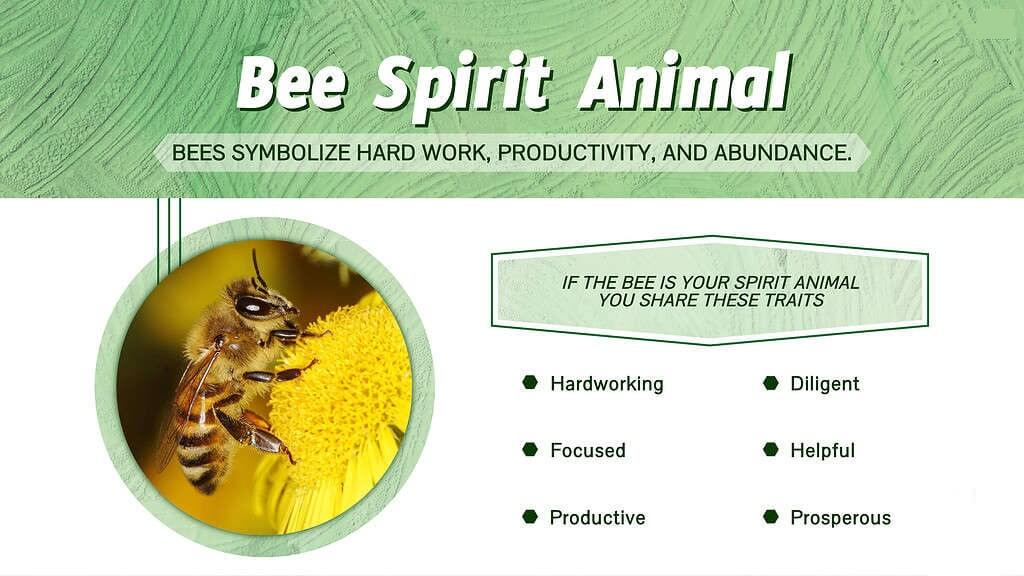
To understand the historical significance of bees, delve into their fascinating symbolism throughout history. Discover the ancient Egyptian symbolism and the intriguing connection between Greek mythology and bees. Uncover the profound meanings and cultural associations that these civilizations attributed to bees.
Ancient Egyptian Symbolism
Bees were highly esteemed symbols of Ancient Egypt, embodying their values and beliefs. Check out this table, which illustrates the significances of bees in their culture.
| Symbol | Representation |
|---|---|
| Bee | Resurrection |
| Honey | Divine healing |
| Beeswax | Eternity & preservation |
| Beehive | Pharaoh’s power & dominion |
These symbolic representations showcase the esteem the Egyptians had for bees. Also, bee hieroglyphs, dating back to 2500 BCE, appear in ancient Egyptian hieroglyphics, proving their lasting impact.
Legend tells us when Alexander the Great invaded Egypt, a swarm of bees stopped him. This was seen by Egyptians as divine intervention, defending their land from foreign interference. Tales like these demonstrate the ancient connection between Egypt and the mighty bee.
Greek Mythology and Bees
In Greek mythology, bees had a divine connection and were symbols of purity, fertility, and community. The goddess Artemis was nourished with honey on Mount Olympus. She also turned a group of mourning nymphs into buzzing bees.
Aristaeus was a demigod who learned beekeeping from the nymphs. To thank them, he made sacrifices. Ancient Greeks knew the advantages of beekeeping for honey and pollination. They cherished honey for its culinary, medicinal, and spiritual qualities.
Moreover, bees had an essential part in ancient Greece’s history. Honey was a valuable resource for sustenance and trade. Additionally, beeswax was used to make candles and cosmetics.
Thus, bees had a sacred role in Greek mythology and culture. They were also a significant part of ancient Greece’s agriculture and trade. Understanding the importance of bees gives us a glimpse into the high esteem they were held in.
Cultural Symbolism of Bees
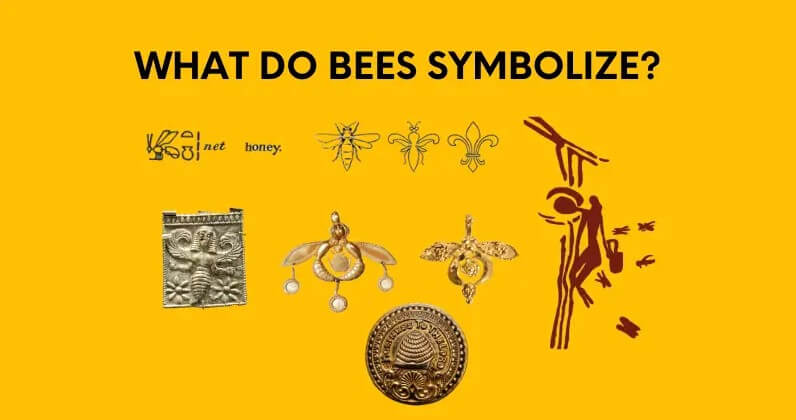
To delve into the cultural symbolism of bees, let’s explore their significance in Christianity and Native American cultures. Discover the rich meanings and interpretations associated with bees in these two distinct cultural contexts. Uncover the unique symbolism and connections that bees have with spiritual beliefs, traditions, and practices.
Bee Symbolism in Christianity
Bees symbolise many things in Christianity, such as community, hard work and divine order. These powerful concepts are found in many bible teachings.
Communal behaviour is seen in bees, who work together to build their hive. This mirrors Christian values, encouraging believers to support one another.
The industriousness of bees is also mirrored in Christianity. Bees are admired for their hard work and productivity, values which align with Christian teachings.
In addition, bees represent divine order and hierarchy. Similar to a hive, where there is a queen bee at the helm, Christians believe in the hierarchy of their faith, where God is the ultimate authority.
Extra details about bee symbolism in Christianity include the story of St. Ambrose, who was found with a swarm of bees near his mouth as a baby. This was interpreted as a sign of his future brilliance.
To incorporate bee symbolism into Christian practices further:
- Sermons or lessons can focus on the power of working together.
- The story of St. Ambrose can be shared to inspire individuals to use their own talents.
- Bee imagery can be used in church decorations or artwork.
By bringing bee symbolism into Christianity, believers can gain a deeper understanding of these values. This can bring worshippers closer and inspire them to use their gifts for the benefit of society.
Bee Symbolism in Native American Cultures
Native American cultures have deep symbolic meanings for bees. They symbolize harmony, community, and fertility.
Here’s a table of symbolism for bees in different Native American cultures:
| CULTURE | SYMBOLISM |
|---|---|
| Cherokee | Messengers between spiritual & physical realms. |
| Hopi | Abundance & agriculture. |
| Navajo | Industriousness, productivity & wealth. |
| Zuni | Collaboration, teamwork & social organization. |
Plus, Native Americans believe bees bring wisdom & knowledge. This is due to their ability to communicate with dance-like movements.
Pro Tip: To make use of bee symbolism, incorporate bee-related art or jewelry in your life. Promote harmony & productivity.
Bee Symbolism in Literature and Art
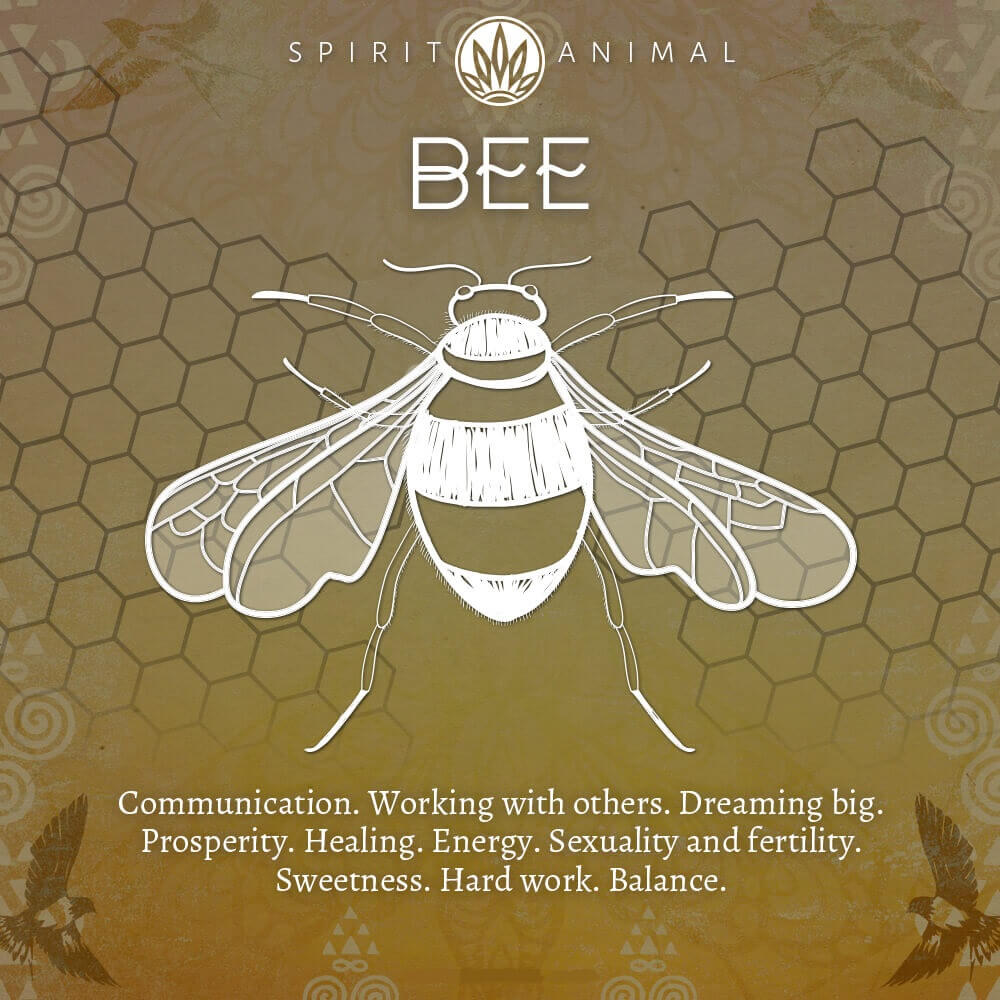
To delve into the intriguing world of bee symbolism in literature and art, explore the section on “Bee Symbolism in Literature and Art.” Discover the profound meanings and representations attached to bees in famous literary works, as well as the captivating utilization of bee symbolism in visual art.
Famous Literary Works with Bee Symbolism
Sue Monk Kidd’s “The Secret Life of Bees” explores beekeeping and uses them as metaphors for growth, female strength and community. Franz Kafka’s “The Metamorphosis” features Gregor Samsa’s transformation into a giant insect that symbolizes vulnerability, isolation and conformity. William Shakespeare’s play “Henry V” uses bees to represent English unity and patriotism.
In Sylvia Plath’s poem “The Bee Meeting”, identity, belonging and societal norms are brought forth through vivid beekeeping imagery. Emily Dickinson’s poem “To Make a Prairie” sees bees as symbols of industriousness and nature’s balance. Samuel Taylor Coleridge’s poem “The Rime of the Ancient Mariner” mentions a swarm of bees as a sign of doom.
Ernest Hemingway’s novel “For Whom the Bell Tolls” has a field full of wild bees that depict fragility amidst war and nature’s resilience in destruction. Leo Tolstoy had a fondness for bee behavior that inspired his writings on human relationships and society. He believed that, like bees, people should work together for the greater good.
Bee Symbolism in Visual Art
Bees have been used in visual art for centuries, symbolizing industry, diligence, community, and order. Colors such as vibrant yellow and black are often used to represent their hard-working nature. Geometric patterns, like honeycomb structures, emphasize the structured organization of bees. Plus, images of bees working together symbolize the power of collaboration.
The ancient Egyptians saw a divine connection to bees, due to their ability to create honey. In Greek mythology, they were linked to the goddess of fertility and love, Aphrodite. During the Renaissance, they were symbols of wealth and prosperity.
Bee symbolism in art is captivating and enduring. It conveys themes of diligence, organization, and collective effort. These qualities are essential to our society and celebrated through visual art.
Modern Interpretations of Bee Symbolism
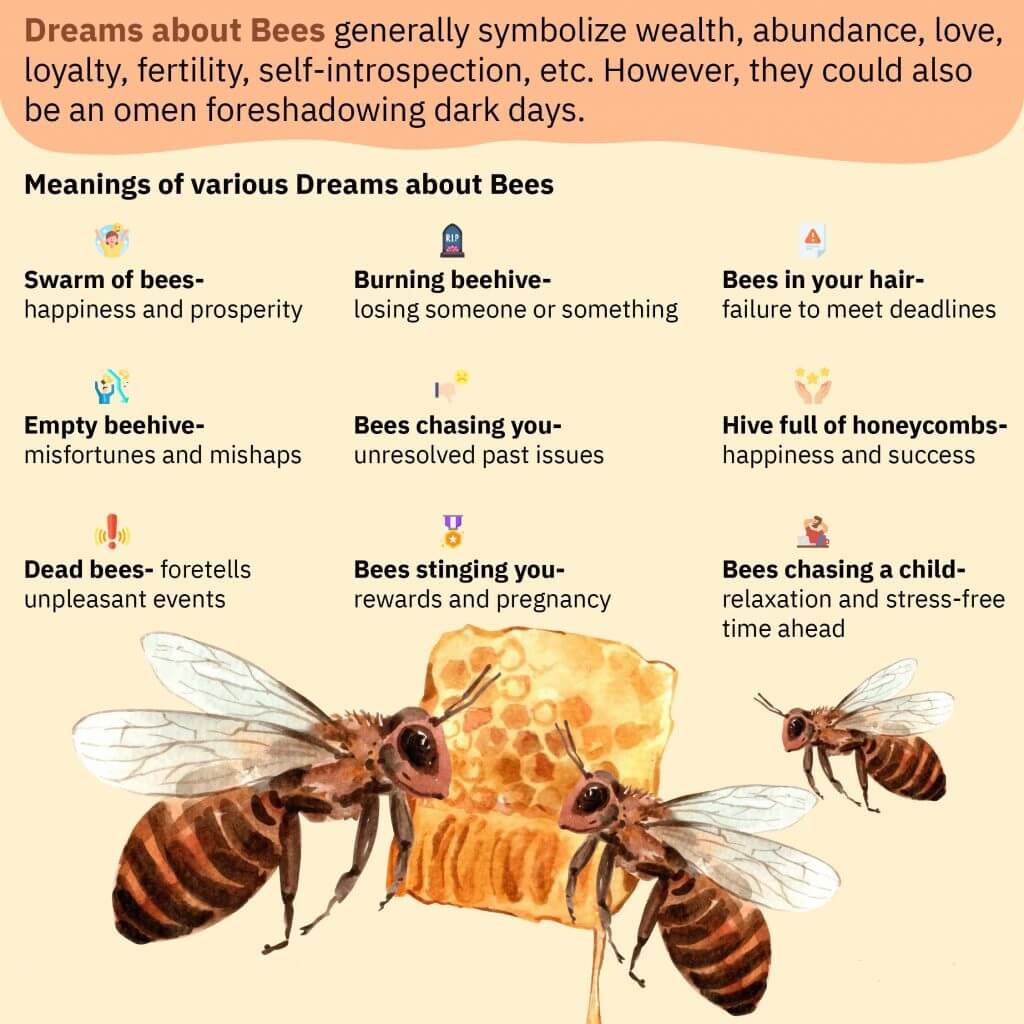
To better understand the modern interpretations of bee symbolism, delve into the world of contemporary culture and explore bee symbolism in marketing and advertising. Discover how bees have become powerful symbols in these realms, each with its own unique connotations and associations.
Bee Symbolism in Contemporary Culture
Bee symbolism has great significance in today’s culture. Bees stand for diligence, cooperation, and harmony. They remind us of the importance of working together. We aspire to be like them and remain focused and determined in our journeys.
Bees collect nectar for their hive, and this encourages us to strive for excellence and stay strong in the face of challenges. Bees also pollinate plants, showing us the interconnectedness of all living beings and the need to protect the environment.
In past cultures, bees were associated with gods and seen as divine. This mystical element adds to their modern meaning: spirituality, abundance, and transformation. They remind us to seek inner growth and embrace change.
One remarkable tale of bee symbolism happened in World War II. A group of Polish prisoners in Auschwitz created an underground university called “Kampf der Bienen” (Fight of the Bees). Despite horrific conditions, they studied literature, science, and history. The name symbolizes resilience and hope, just like bees continue their work despite obstacles.
Bee Symbolism in Marketing and Advertising
Bees are known for hard work and collaboration, making them a perfect symbol for marketing and advertising. Representing hard work, collaboration, and community, they can be used to convey powerful messages in brand campaigns.
For instance, their diligent work ethic highlights the dedication and perseverance of a company or its employees. And, bee colonies working together towards a common goal can emphasize collaboration and collective efforts.
Plus, bees are essential for preserving our ecosystems. By incorporating bee symbolism, businesses can demonstrate their commitment to sustainability and environmental conservation.
Moreover, bee imagery and metaphors can evoke feelings of trust, loyalty, and being part of something greater. These associations can significantly influence consumer perception and engagement with a brand.
An example of this is a beauty brand that used bee symbolism to promote natural ingredients sourced sustainably from local farmers. This campaign highlighted the brand’s commitment to local communities while delivering high-quality products, resonating with consumers who valued environmental consciousness. This lead to increased sales and brand loyalty.
Businesses can unlock the power of bee symbolism to create impactful marketing campaigns that capture attention and convey meaningful messages about their values and aspirations. In today’s competitive landscape, understanding the importance of such symbols is key for effective communication with consumers.
Frequently Asked Questions
Q: What does a bee symbolize?
A: Bees symbolize hard work, community, and organization. They are often associated with diligence, productivity, and teamwork.
Q: Is bee symbolism common across different cultures?
A: Yes, bee symbolism can be found in various cultures around the world. Bees are often seen as symbols of fertility, abundance, and wisdom in many societies.
Q: What does it mean if a bee enters your home?
A: In some cultures, it is believed that if a bee enters your home, it brings good fortune and prosperity. It is considered a sign of positive energy and abundance.
Q: Are bees symbols of protection?
A: Yes, bees are often associated with protection and defense. They are known for their loyalty to their hive and will fiercely protect it from any threats.
Q: Do bees symbolize spiritual guidance?
A: Yes, bees are sometimes seen as messengers from the spiritual realm. They are believed to bring messages of guidance, intuition, and divine wisdom.
Q: Are bees symbols of transformation?
A: Yes, bees are often seen as symbols of transformation and personal growth. They undergo a remarkable metamorphosis from egg to adult, representing the potential for growth and change.
Conclusion
To conclude, gain a comprehensive understanding of bee symbolism by exploring its historical significance and continued relevance. Recap the various aspects of bee symbolism throughout history, and analyze the overall impact it has had on different cultures and societies. Discover why bee symbolism remains significant in the present day.
Recap of Bee Symbolism throughout History
Bees have had huge symbolism in many cultures through the ages. Let’s take a look!
Symbols of Bees in History
- Greek Mythology: Hard work and sacrifice
- Ancient Egypt: Regeneration and rebirth
- Christianity: Order and harmony
Plus, in Hinduism, bees are linked to Kamadeva, god of love and attraction. In Chinese culture, bees mean wealth and prosperity, due to their hard work.
The Mohawk tribe have a legend about bees. A young boy called Flying Scout got lost in the woods. Then, a swarm of bees guided him back to his village. So, bees became sacred to them.
Bees have a lot of meanings across the world. They tell us stories of diligence, cooperation, regeneration and much more.
Overall Impact and continuing relevance of Bee Symbolism
Bee Symbolism has had a big effect on human culture across history. Its symbolism of cooperation, community, fertility and hard work still remains very relevant today.
- It symbolizes the power of teamwork as bees work together in their hives to collect nectar.
- It serves to remind us of the importance of hard work and diligence, which bees exhibit as they collect pollen and make honey.
- It also represents the interconnectedness of nature, with bees being essential for pollination and the survival of many plants.
- The bee’s intelligence is highlighted by its ability to communicate complex information through dance, like a metaphor for effective communication in human societies.
- Plus, Bee Symbolism is linked to abundance and prosperity due to the honey produced by bees.
Nowadays, Bee Symbolism is even more relevant due to problems like habitat loss and pesticide use. It’s a call to action for environmental efforts to save these important pollinators.
One example of Bee Symbolism’s influence is a community garden in an urban area. The crops weren’t doing well because of lack of pollination. As an ode to bee symbolism, the gardeners installed beehives – the result was a flourishing ecosystem where both plants and bees prospered.





